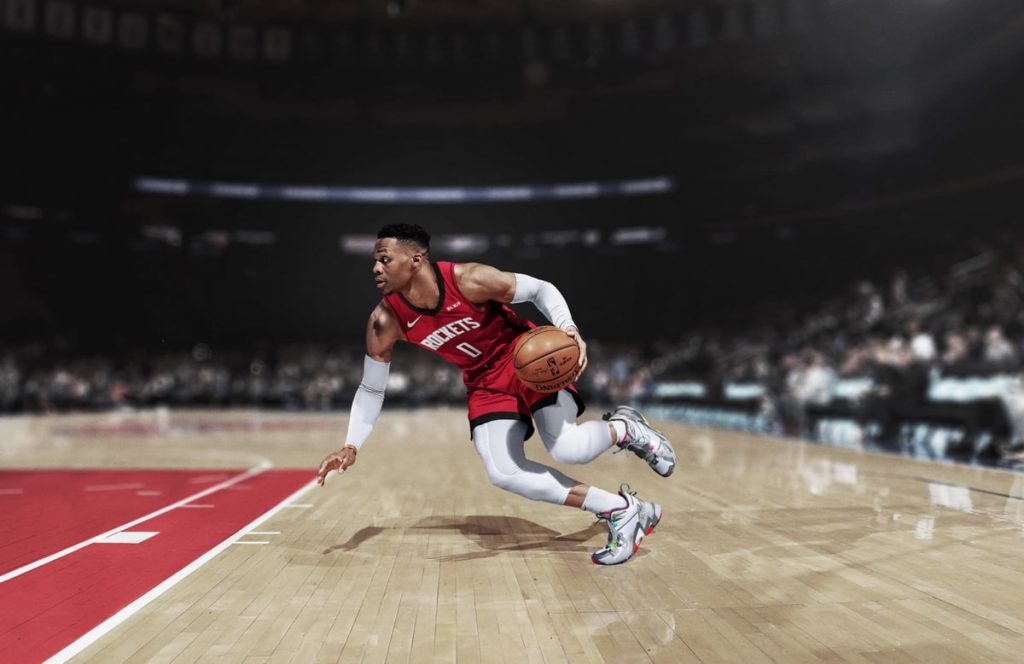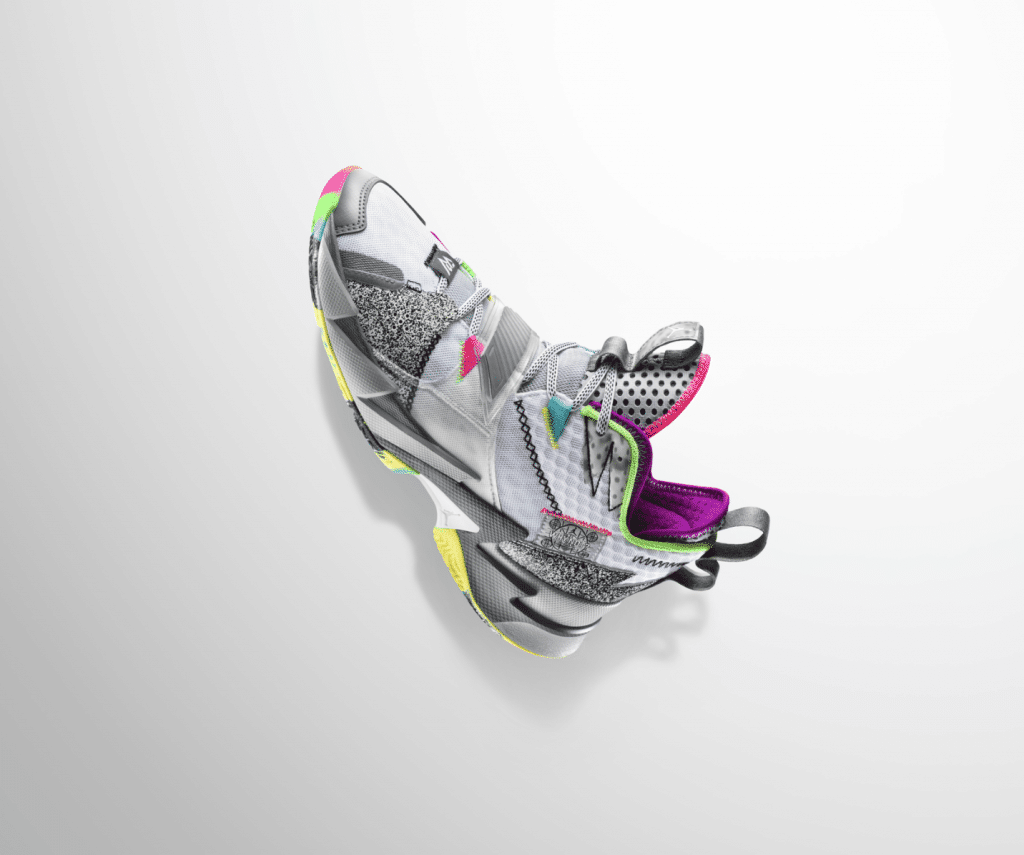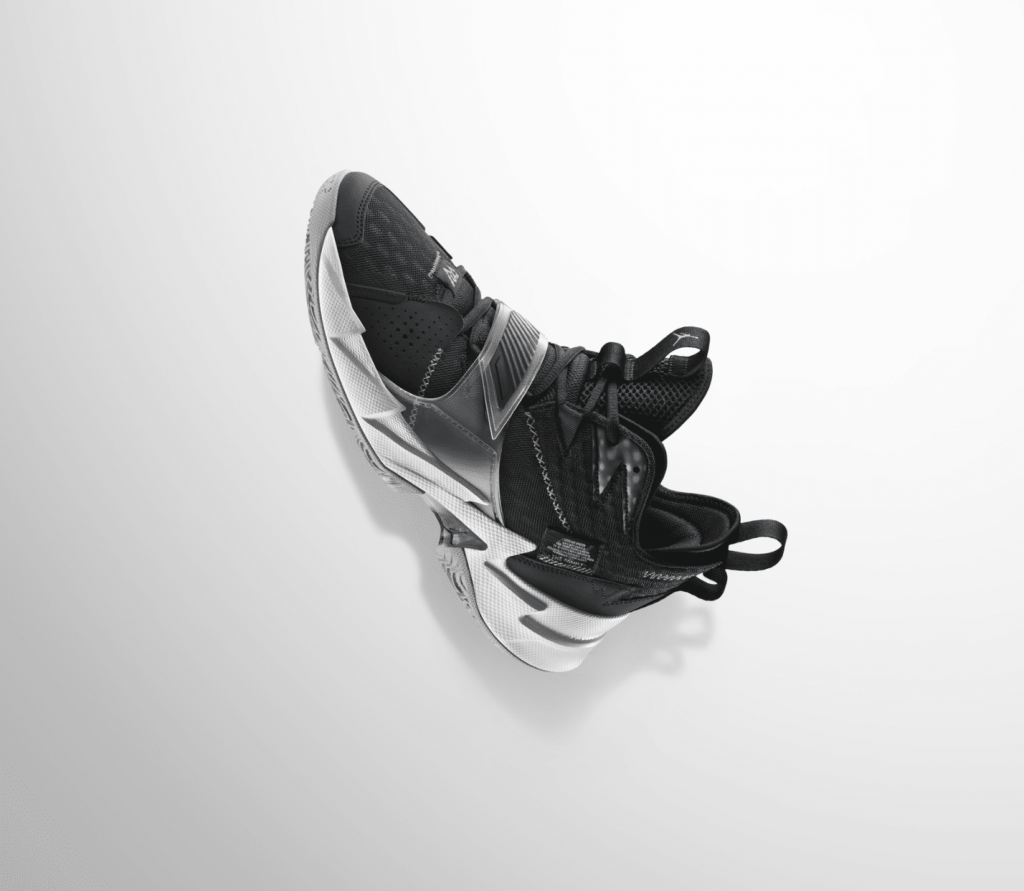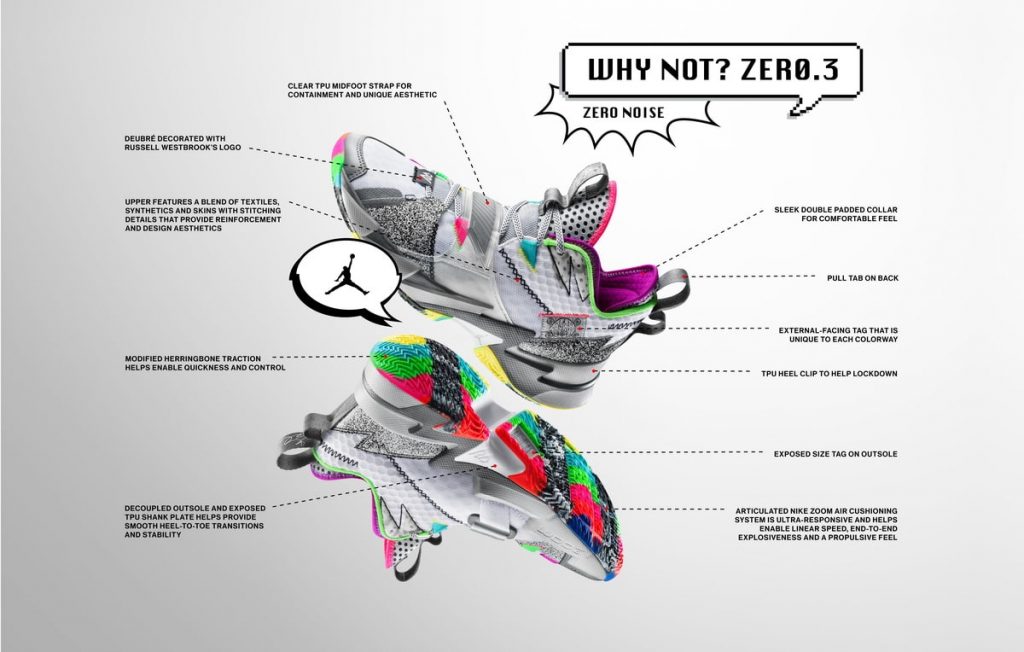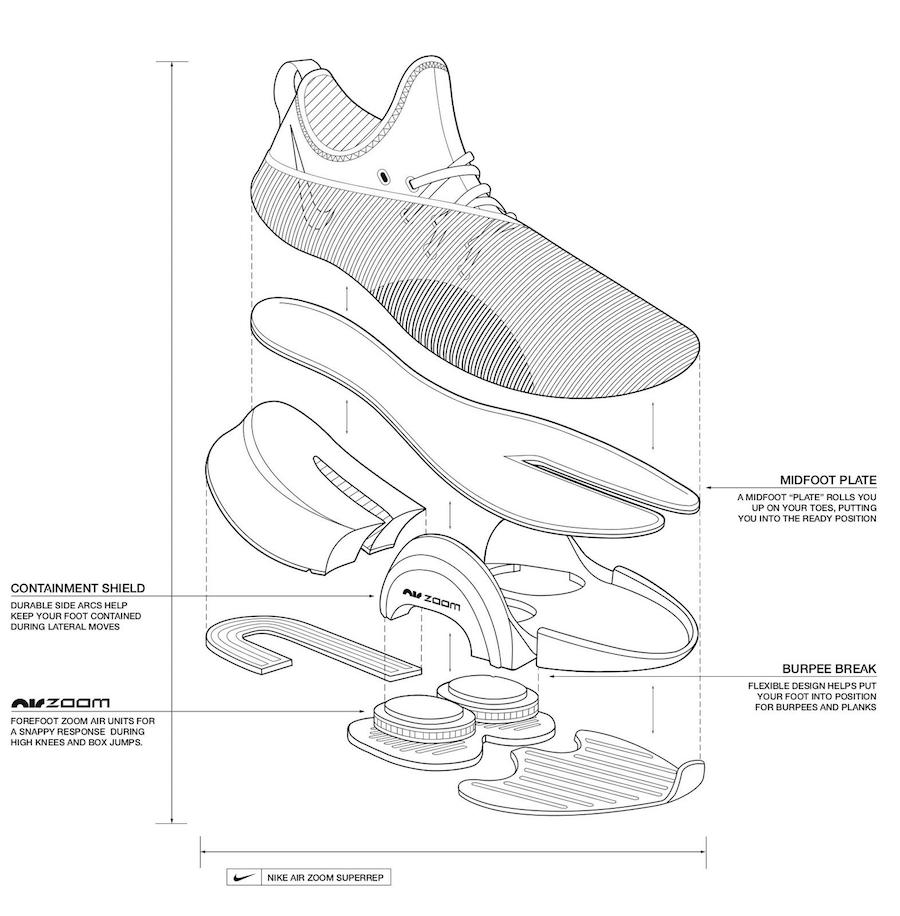Executive Summary: plays almost exactly the same as the Kyrie 2. Similar firm cushioning and very good traction. Shoe starts stiff but breaks in. No real reason to buy the 3 when the 2 does nearly everything the same or better though.
Pros: traction, court feel, fit, support and stability, containment, very durable
Cons: traction pods protrude and cause a little bit of inconsistent traction in the heel, needs periodic wiping on dusty floors on Non pod portions, cushioning needs break in and is very stiff and firm like the Kyrie 2, materials start stiff but break in, not the best value out there especially now that sale time is upon us.
Sizing: true to size, very wide footers will probably want to go up half a size
Best for: guards looking who value response and quickness; players who liked the Rose 4
Buying Advice: wait for sales, Nike made a lot. $90 is fair, $65 is near the bottom. Or just buy the Kyrie 2
Weight
14.5 oz which is pretty average
Kyrie 2 is the exact same weight
Traction
If there is one thing you can say about the
Kyrie 6 line, it’s that it’s traction patterns look aggressive.
The main attraction of the Kyrie 3 traction is the use of traction pods in the forefoot that ride up the sides.
The rubber is softer and raised a millimeter or two from the rest of the shoe.
The concept works and the pods do their job very well. The rest of the shoe is a blade pattern or modified herringbone and feels softer than the Clutchfit Drive herringbone but firmer than the Kyrie 2 rubber. I wish the entire outsole was made of the pods’ rubber or Nike put some of these pods throughout the entire outsole like the AJ XX because on a few occasions I’d spin out at the heel since the forefoot stuck better than the rest of the shoe. This occurred even on pristine floors. Nitpicky I know.
One concern with the traction pods is durability and efficiency once they wear down. I think they will still work fine once they wear evenly with the rest of the outsole but expect more wear in that area due to the softness of the rubber.
Overall traction is very good overall but I feel the Kyrie 2 provided better consistent traction overall especially on dirty floors since it is the same rubber, pattern, and depth throughout the outsole. Neither required too much wiping but the 3 needed a few more wipes per session. Not quite top tier stuff but still good overall.
Cushioning
Here is the tech highlight of the Kyrie 3. The rest of the shoe is Phylon just like last year’s.
If you did not like the cushioning on the Kyrie 2, you will not like the cushioning on the Kyrie 3. Say with me again, if you did not like the cushioning on the Kyrie 2, you will not like the cushioning on the Kyrie 3. One last time..
Cushioning is very firm on the Kyrie 3 just like the 2. It starts off very very stiff but softens a little with break in. I could feel the Zoom a tiny bit just like on the 2. It is serviceable and responsive as Randy noted but I just prefer a little more softness in the forefoot because I have Morton’s neuroma in each foot. The good news is that the neuromas didn’t flare up badly but I could feel some buzzing after an hour just like the 2’s. I prefer a more balanced cushioning feel overall and these are just a little too hard for my tastes. The set up feels almost exactly the same as the Rose 4 except the Rose 4 has a thicker PU insole. Very low to the ground and quick feeling.
*interstingly enough if you check out
sneakerdebut see the Kyrie actually sits at nearly 18 mm which is higher off the ground than the Harden V1 or CLB. Of course that’s not accounting for the insole thickness which probably evens it out. Thanks reader Pflite*
Although this didn’t really affect cushioning much, these two changes make the cushioning on the 3 feel a smidge firmer:
Number 1
The
Kyrie 5 featured Poron in the forefoot while this year’s does not. Hard to really tell a difference but to the touch Poron is softer.
Number 2
The Kyrie 2 had an ortholite insole while this year’s doesn’t have the ortholite markings so in guessing it’s not ortholite. Anyways, the name doesn’t matter but the Kyrie 3 insole is very thin and flimsy like a limp noodle (it can barely hold its shape when I took the pic) plus it feels slightly thinner towards the middle than the Kyrie 2 insole. It’s as if someone wore down the insole of the Kyrie 2 and put it into the Kyrie 3. That’s how thin it feels to me. On Adidas Boost models, the thin insole is fine since it has all that Boost below it but with this firm set up, Nike really should have given us a thicker insole.
If you’ve ever played in basketball ball in tennis shoes like the Adidas Barricade or even the Nike Zoom Vapor 9, that’s what the cushioning feels like. Actually the Zoom Vapor 9 has the exact same size Zoom and a similar if not thicker Phylon set up from heel to toe including the foam strobel.
However, the Zoom Vapor feels better because the insole is thicker. If you want to improve the comfort level of the Kyrie 3, get a bigger size and put in a thicker insole to add a couple of millimeters more of cushioning. Keep in mind that it might feel better underfoot but one or two millemeters isn’t going to fix any knee issues you might have.
Fit
I bought my true to size 11 and initially thought I should have gone up half a size. However, after playing in them a few weeks, true to size was the way to go. Even though I’m a wide footer, these stretched out enough for me. If you’re Fred Flintstone, you should at least try half a size up before deciding on the correct width though.
There is no movement in the forefoot, very little deadspace above the foot in the toe box and zero heel slip. Midfoot fit is still tight like the previous models but not deathly like the Kyrie 1.
After a few hours of break in time, you almost forget they are on your feet as the upper softens up. Almost
Even though the Kyrie 3 has a very good fit, the Kyrie 2 has an even better fit due to the strap that helped pull the ankle and heel back further.
Materials
In case you’re part of the Night’s Watch or need to defend Winterfell….
The materials start off stiff but soften up quickly. They don’t feel Flyknit soft or anything but they do soften up enough after a few hours of break in time. The spiked look doesn’t really convey a soft warm comfy feel does it?
The lateral side of the upper is a similar fuse as last year’s model
Not cracker crispy like the Kyrie 1 but not definitely not Snuggles soft.
The medial side and toe box is mesh with a nylon backing and feels a lot softer than the lateral side. The front of the toe box does have a hard rand for durability as well.
I’ve noticed this is a trend these days as shoe companies have added strength and stiffness to the lateral side for containment and support while leaving the medial side soft for flexibility. Hmmm, maybe I did make a difference .(I’m kidding I don’t have that kind of pull)
Of course we can’t forget the featured marketing portion which is the forefoot flex area.
Across the top of the foot, a long stretchy band flexes with your foot for support during quick cuts and sprints.
Nike used a thinner mesh and Flywire to allow extra flexibility at the forefoot. I don’t it feel stretches at all but that thinner mesh allows for a more natural flex area. Plus it’s hard to quantify if it really works since the rest of the upper is so much stiffer than this little area.
If you’re big on materials and have to have that pure Flyknit or Primeknit or mesh feel, you probably will want to steer clear of the Kyrie 3. I think the materials are fine and don’t affect playability but every person has different needs and wants.
Support and Stability
Support
is good with the Kyrie 3 thanks to the fit, heel counter and stiffer fuse on the lateral side. Just plain and simple, solid support. As stiff as the upper starts off, it is plenty flexible like the Kyrie 2 and isn’t going to save any ankles
Nike continued with the curved outsole but didn’t choose to market it this time around.
It seems slightly less curved in the forefoot than the Kyrie 2. After not playing in the Kyrie 2 for a year you can feel a difference with the curved outsole but it doesn’t make a difference for me in terms of performance.
Also helping with the stability was the firm, low to the ground cushioning.
Overall just a solid supportive and stable shoe. Same as the Kyrie 2.
ContainmentNo surprises here as containment was excellent thanks to that stiffer lateral fuse upper as well as the raised midsole. Softer materials might be all the rage but there are benefits to using stiffer and stronger materials like Fuse.
Conclusion
Not the best value out there but a good performer overall. The Kyrie 3 has great traction, a good fit with solid support and stability and very firm cushioning. I had no issues with aches or pains but then again don’t have knee or back issues (knock on wood). The Kyrie 3 just feels like a quick high cut tennis shoe for players that value lateral quickness over everything else.
Cushioning will come down to personal preference and if you didn’t like the 2 cushioning you will not like the 3. I’ll even qualify that statement with this;
If you don’t like UA Charged you will not like cushioning on the Kyrie 3. Charged foam is easily thicker bouncier and softer. If you want to improve the comfort of the Kyrie 3, size up and swap out the cheapo insole.
Is the Kyrie 3 an upgrade over the 2? No I don’t feel it did anything better than the Kyrie 2.
Is it worth paying $120? No probably not. There are plenty of shoes out that at the $120-$130 range that do everything just as well or better than the Kyrie 3. Curry 2, 2.5, 3 all come to mind. Plus it’s almost mid season so there are plenty of sales on earlier launches.
Do not buy these if you want a softer cushioning set up or if you want a Charmin soft upper material.
I’m guessing Nike made a lot of these to capture the new Kyrie fans post championship. If Kyrie 2 sales are any indication, these should hit $90 under range soon and bottom out around $65. If you want a marginally better performing and cheaper shoe, stick to the Kyrie 2.
